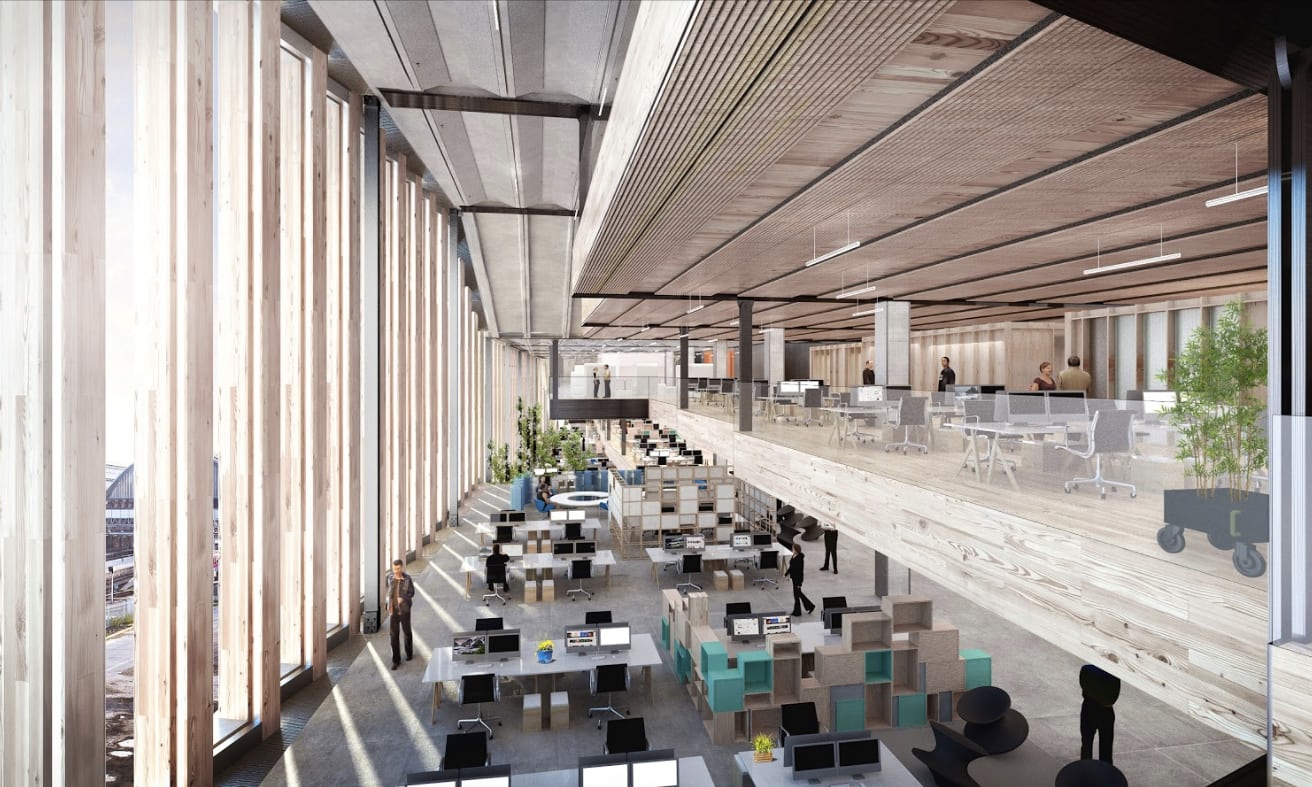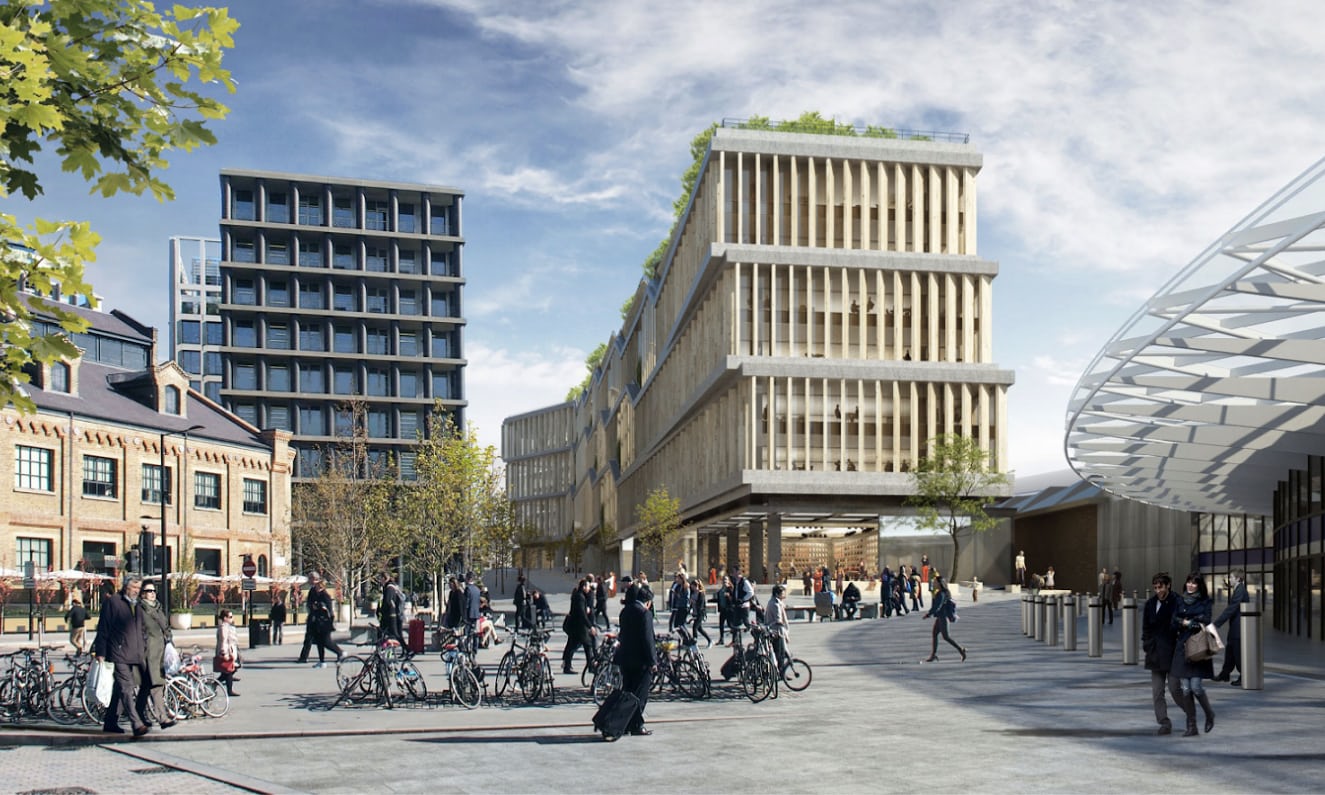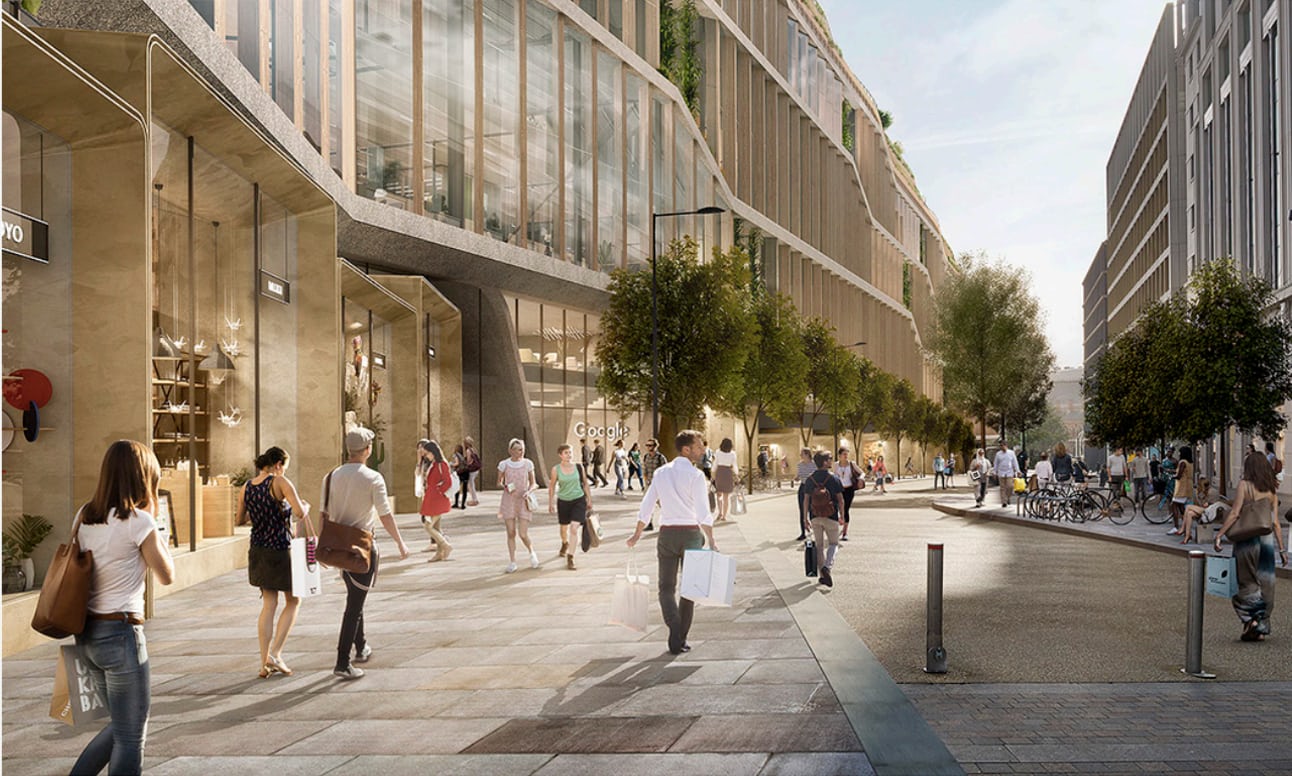The plans for Google’s colossal new London HQ have been submitted, and the world has been granted a glimpse of what’s in store for the 7,000 employees who will work at the highly-anticipated site.
The building, which will be located next to King’s Cross Station, has been dubbed a ‘landscraper’ – when it’s complete, it will be longer than the Shard is tall. It will stretch across more than 3km of ground, providing more than 92,000 square metres of space across 11 floors. It’s also set to be the first headquarters outside of the US to be designed, owned and operated entirely by Google itself.
Google’s offices in London are currently spread across three different sites. The new development will unite these separate workspaces, bringing staff from Covent Garden and Victoria to the King’s Cross building, which is set to be the European home of Google in the long-term.

Photograph: Google
Is Google growing up?
This sophisticated, glamorous building seems a world away from Silicon Valley, where new office spaces come in the form of futuristic greenhouses, caves, amusement parks and speakeasy bars.
Plans unveiled for the building back in 2015 were criticized as ‘too boring’ – but it seems that Google wants to deliberately move away from the contrived, ‘wacky’ reputation of tech companies and their buildings.

Photograph: Google
Under the hood
Google might be growing up, but that doesn’t mean that the new 11-floor landscraper will simply be packed with traditional desks, meeting rooms and canteen spaces. As you might expect, the gigantic headquarters has enough amenities and facilities that it could be termed a village in its own right. Google may be waving goodbye to the image of staff working from beanbags and getting around on micro-scooters, but it doesn’t compromise when it comes to providing gold-standard facilities for its workforce.
When the building is up and running (development starts next year, with no specific completion date as of yet), Google employees will be able to take advantage of a 25m swimming pool, basketball courts, a 210-seat auditorium, massage rooms, wellness areas and a cluster of nap pods. An incredible rooftop garden will be filled with wildflowers and woodland plants, with a 200m running track allowing employees to clear their minds and escape into nature without even leaving the campus. The trend of ‘walking meetings’ is set to be very much encouraged on this huge site.
The entire building will sit on top of a row of restaurants and shops, providing important retail revenue that will help pay for the development of the site. There’ll be four on-site cafes for employees to enjoy at their leisure, with the main eating space spanning three floors. There’s also a ‘promenade’ area with views over King’s Cross, helping employees to feel very much a part of the capital.

Photograph: Google
Creating the perfect 21st century workspace
As you might imagine, the new Google campus is packed with features and architectural quirks that will help to make it one of the most advanced office spaces in the world. Within the building, there will be three concrete floor decks which support lighter floors made from timber, which will hang between them. These have been arranged to create an array of different workspaces, ranging from single to triple-height. The work environments will ‘cascade’, and the open-plan layouts of every floor intend to keep every employee connected, regardless of location.
Floor to ceiling windows will surround the entire building, letting in light all day. These windows will be lined with rotating wooden shutters powered by motors, which block out the glare from the sun while still ensuring that the building is primarily illuminated with natural light. There won’t be a fluorescent strip light in sight on this futuristic campus.
Of course, sustainability and environmental concerns are paramount with a build of this size. The development will have space for just four cars (one would assume these will be reserved for Google’s most esteemed executives). Cyclists will benefit from 686 spaces for their wheels. The rooftop garden will be interspersed with solar panels, which have an annual output of almost 20MWh, helping to supplement the considerable amount of electricity required to power a tech site of this capacity.

Photograph: Google

